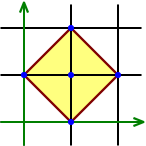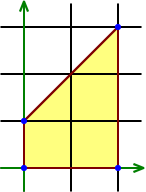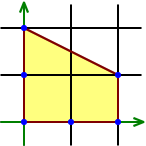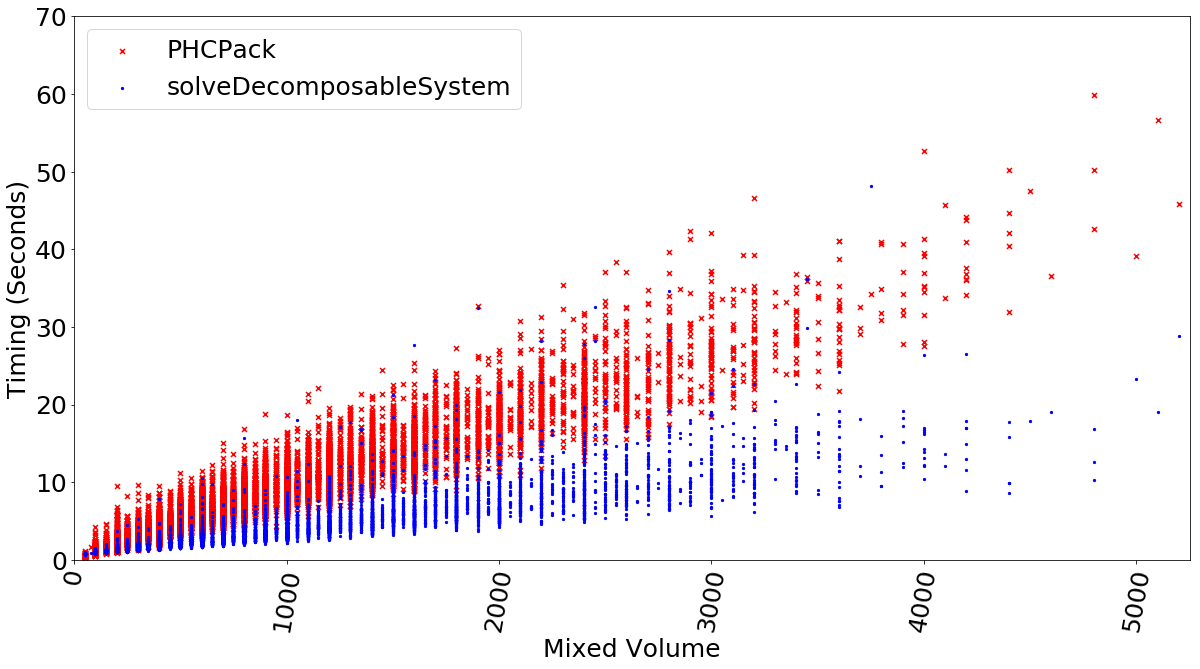About
A sparse polynomial system is decomposable if its associated branched covers factors as a composition of nontrivial branched covers on an open set. Solutions to such systems can be computed by iteratively factoring these branched covers and computing their fibres. These fibres can be computed as solutions to simpler sparse polynomial systems.
We describe this technique of solving sparse polynomial systems explicitly in our paper Solving Decomposable Sparse Systems. We have implemented this method in the Macaulay2 package "DecomposableSparseSystems.m2", which is included in current distributions of Macaulay2.
Example
For a system of polynomial equations
the support of
is the collection of
integer matrices whose columns are the exponent vectors appearing in each polynomial
Let
,
,
,
and
We consider the columns of these matrices as exponent vectors in this way and display their convex hulls below.
Let
be the vertices of the five-dimensional cube. We construct sparse decomposable systems from
,
,
and
as follows. Choose two embeddings
and
such that
For example, choose four linearly independent vectors
and define
and the same for
These embeddings correspond to monomial maps. For example, the embedding corresonponding to the vectors
and
corresponds to the monomial map on
sending
and
For any matrix
the image
is the set of exponent vectors that appear by precomposing a polynomial supported on
with the monomial map associated to
Set
Any sparse system with support
is decomposable and can be efficiently solved with the Macaulay2 software above via the command solveDecomposableSystem. If the equations are in a list F, the command solveDecomposableSystem(F) will compute a list of solutions to F.
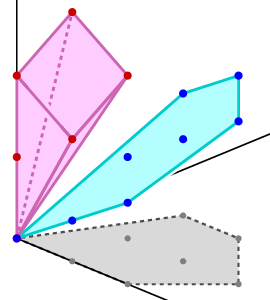
 Solving Decomposable Sparse Systems, Numerical Algorithms 88, 453-474 (2021)
Solving Decomposable Sparse Systems, Numerical Algorithms 88, 453-474 (2021)
 Decomposable Sparse Polynomial Systems, Journal of Software for Algebra and Geometry Vol. 11 (2021), 53-59
Decomposable Sparse Polynomial Systems, Journal of Software for Algebra and Geometry Vol. 11 (2021), 53-59

